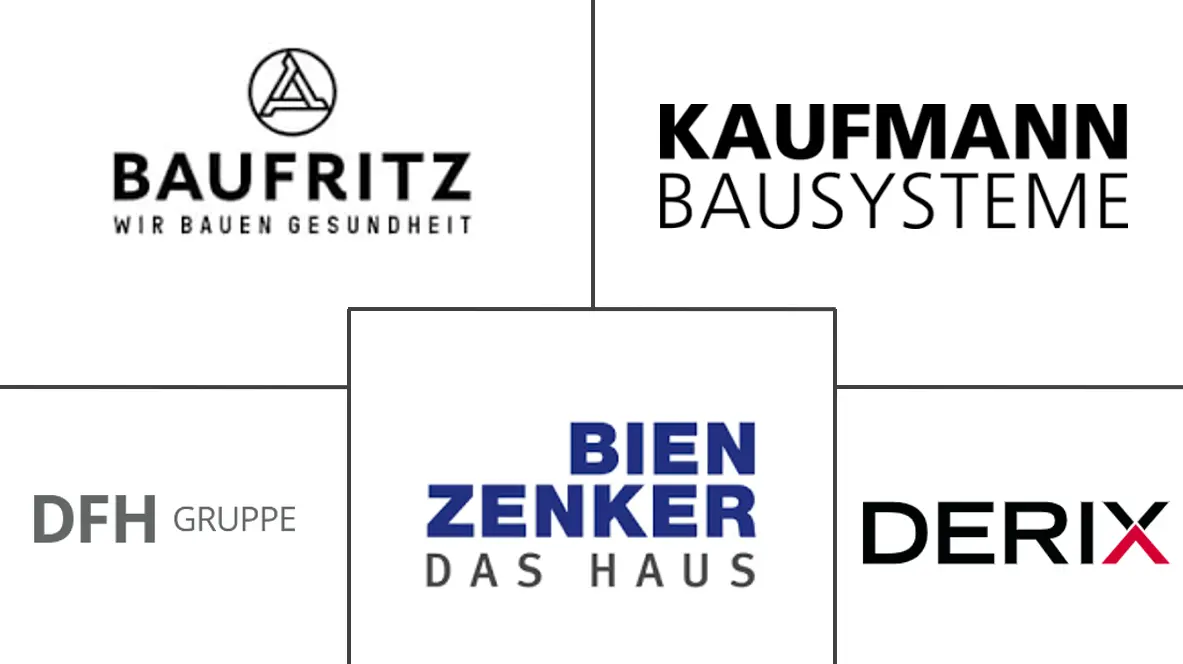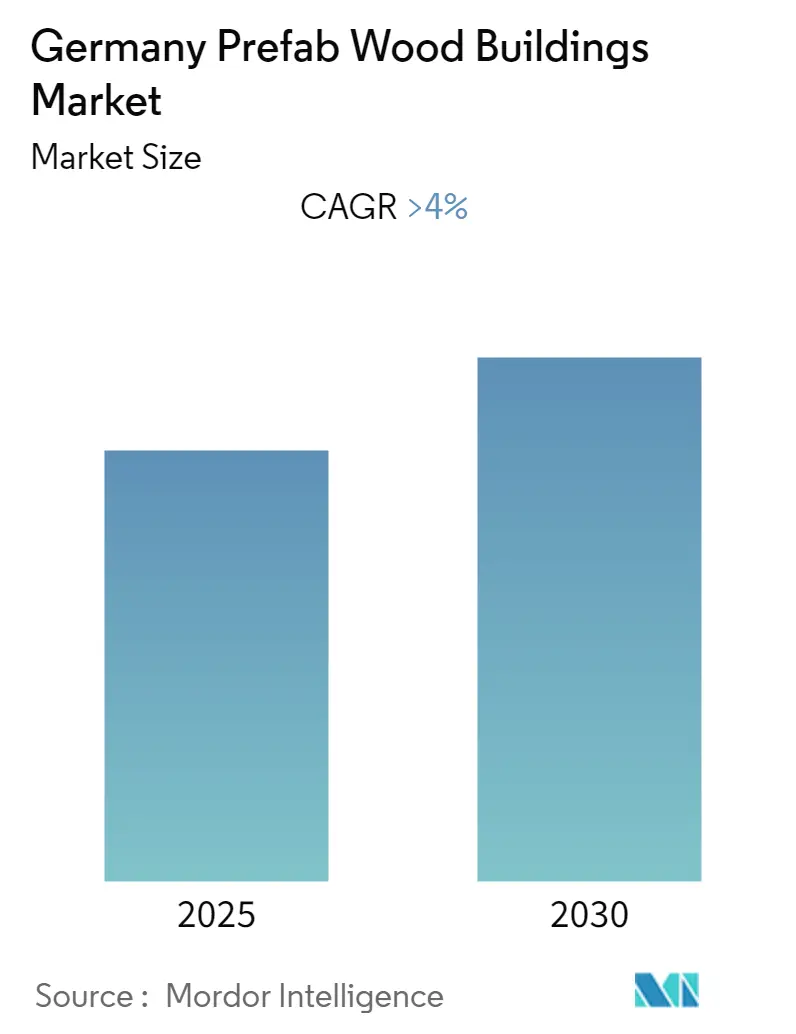
Germany Prefab Wood Buildings Market Analysis by Mordor Intelligence
The Germany Prefab Wood Buildings Market is expected to register a CAGR of greater than 4% during the forecast period.
- COVID-19 has slightly impacted the prefabricated housing market in Germany. Due to COVID-19 restrictions, many construction projects were delayed or canceled. In addition, the pandemic has boosted offsite construction in the country, which offered improved safety, reduced risk, and greater certainty of completion on time and within budget.
- Germany witnessing a rise in timber construction, and out of five buildings constructed in the country, one is made of wood prefab modules. In addition, Berlin is becoming a hotspot for the wood prefab industry's growth. In September 2021, the German government planned to erect a seven-story office building made of wood, and the building is completely made of prefabricated wooden modules. This building is meant to provide offices for nearly 400 members of parliament.
- Moreover, timber structures are widely adopted in the country. For instance, in November 2022, EDGE Suedkreuz Berlin proposed a new concept of a sustainable future for building systems with timber. This project is a seven-story office complex consisting of two structures spread across more than 32,000 square meters.
- In addition, this project is one of the largest freestanding hybrid-timber projects in Europe. Also, in 2022, the German Sustainable Building Council (DGNB) designated the project as Germany's most sustainable building. Thus, the growing concerns about sustainability and increasing conventional construction costs will drive the timber prefabricated structures in the country.
Germany Prefab Wood Buildings Market Trends and Insights
Timber Buildings Witnessing Significant Growth
Timber structures are witnessing significant growth in Germany, to achieve net zero emission targets. Currently, wood emerging as a primary building material, not only for detached residential housing but also for multi-family and commercial urban structures. In addition, increasing emphasis on the environment and emission controls drives the demand for wooden prefab buildings' adoption over conventional constructions.
Moreover, in 2022, wooden modular construction witnessed lucrative growth, majorly due to increased sustainability requirements and the cost-effectiveness of prefabricated wood-based modules. In addition, Berlin is emerging as a hotspot for the wooden prefab industry. For instance, in 2022, three-story wooden schools are being built in Berlin by Austrian prefabrication constructor Kaufmann Bausysteme.
In addition, the Senate Department for Urban Development & Housing planned the construction of 32 wooden prefabricated schools by the end of 2025. The department has chosen an offsite construction method with prefabricated modules to reduce the construction time by half. Moreover, the school comprises of nearly 100 modules, each 3-m wide and 8-m long. All modules were prefabricated offsite and assembled on the construction site. However, in 2021, to meet the growing demand for prefabricated structures, more than 334,000 tons of prefabricated buildings (whether complete or already assembled) were imported into the country, at a growth rate of 5% when compared to the previous year.
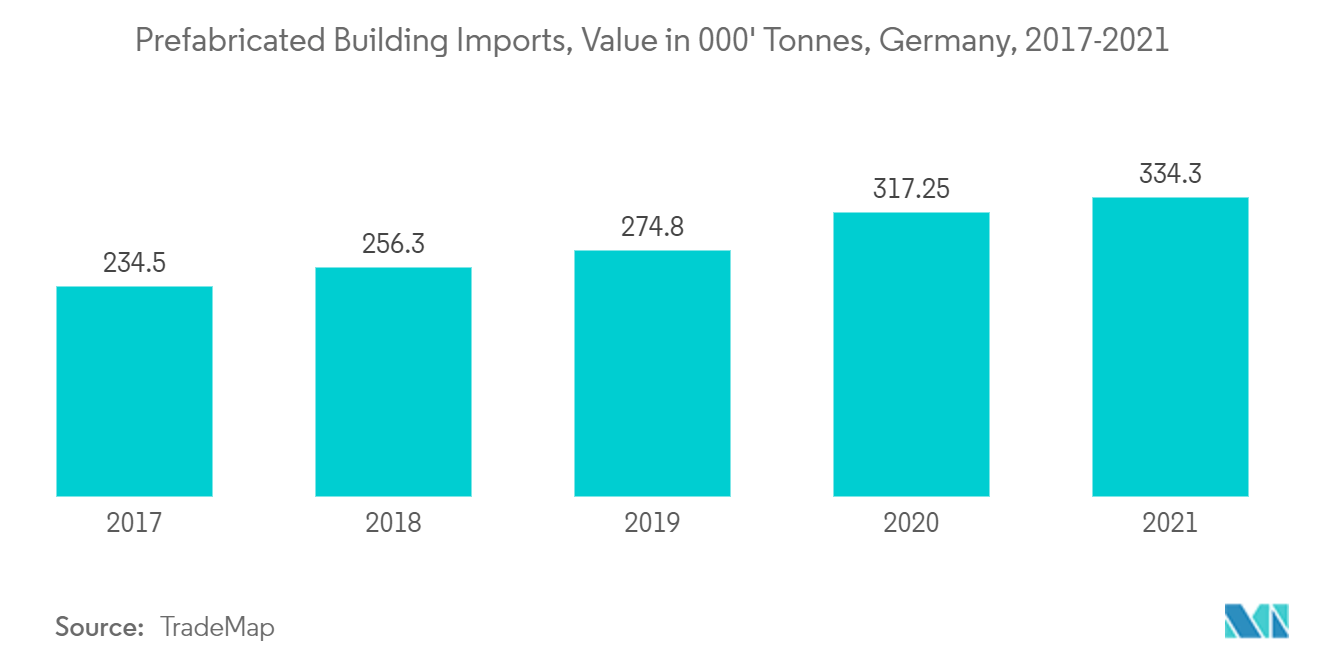
Increasing Costs of Construction is Driving the Market
In 2022, according to the federal statistical agency, Germany is experiencing a shortage of housing supply despite the growing demand. In November 2022, more than 16% of the German construction companies in Munich suffered the cancellation of building projects, and on the contrary new home building demand increased to 14% in October 2022. In addition, raw materials inflation is high in the country, further fueling construction costs.
Meanwhile, the major reason behind the construction prices spiking was the rise in prices of building materials. In January 2022, wood, steel, and insulation materials became expensive when compared to the previous year. In addition, in terms of structural work, the prices for carpentry and wood construction witnessed a growth rate of more than 38%, additionally, roofing and roof waterproofing (17%), plumbing (16%), and concrete work (16%) also rose significantly.
Moreover, the high demand for land and shortage of materials are further increasing construction costs. Currently, prices are growing more sharply than they have in over five decades. In addition, most of the construction and civil engineering companies experienced supply shortages. Thus, the supply shortages in construction materials and rising costs are bolstering the demand for wooden prefab structures in the country.
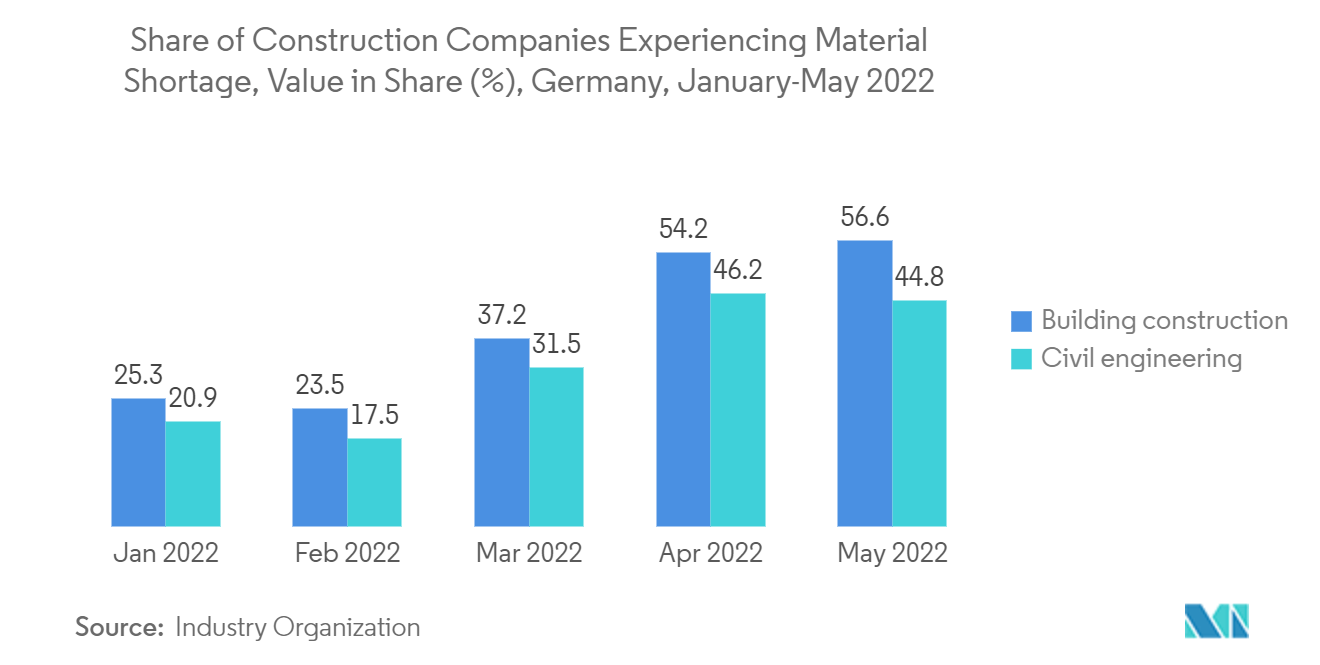
Competitive Landscape
The report covers major players operating in the Germany Prefab Wood Buildings Market. The market is highly competitive and fragmented in nature, with none of the players occupying the major share. To remain competitive in the market the major players in the market are constantly working to enhance their product offerings to meet the changing needs of the wooden prefab homes market. Some of the major players in the market include W. u. J. Derix GmbH & Co., Kaufmann Bausysteme GmbH, DFH Haus GmbH, etc.
Germany Prefab Wood Buildings Industry Leaders
W. u. J. Derix GmbH & Co.
Kaufmann Bausysteme GmbH
DFH Haus GmbH
Bien-Zenker GmbH
Baufritz
- *Disclaimer: Major Players sorted in no particular order
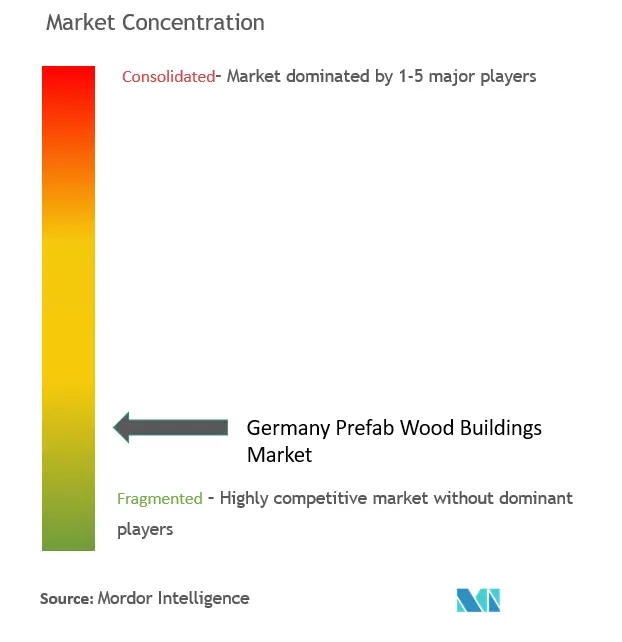
Recent Industry Developments
October 2022: Knauf Group (a building material company), announced a unique partnership between Knauf Gips and Knauf Insulation, resulting in a wall system development, which is primed for the future of timber frame construction and prefab.
January 2022: Semodu AG (Munich-based prefab company), announced a partnership with Coalition for Timber Construction. This partnership enhances the wooden prefabricated buildings portfolio of the company.
Germany Prefab Wood Buildings Market Report Scope
Wooden prefabricated buildings involve premade pieces that are constructed off-time. Prefabricated wood building kits, similar to life-sized Legos, are made up of prefabricated components that are delivered and assembled on-site. Furthermore, this report covers market insights, such as market dynamics, drivers, restraints, opportunities, technological innovation, its impact, porter's five forces analysis, and the impact of COVID-19 on the market. In addition, the report also provides company profiles to understand the competitive landscape of the market.
The Germany Prefab Wood Buildings Market is segmented By Panel Systems (Cross-Laminated Timber (CLT) Panels, Nail-Laminated Timber (NLT) panels, Dowel-laminated Timber (DLT) Panels, and Glue-Laminated Timber (GLT) Columns and Beams), and By Application (Single Family Residential, Multi-Family Residential, Office, Hospitality, and Others). The report offers market size and forecasts for the Germany Prefab Wood Buildings Market in value (USD billion) for all the above segments.
| Cross-Laminated Timber (CLT) Panels |
| Nail-Laminated Timber (NLT) panels |
| Dowel-laminated Timber (DLT) Panels |
| Glue-Laminated Timber (GLT) Columns and Beams |
| Single Family Residential |
| Multi-Family Residential |
| Office |
| Hospitality |
| Others |
| By Panel Systems | Cross-Laminated Timber (CLT) Panels |
| Nail-Laminated Timber (NLT) panels | |
| Dowel-laminated Timber (DLT) Panels | |
| Glue-Laminated Timber (GLT) Columns and Beams | |
| By Application | Single Family Residential |
| Multi-Family Residential | |
| Office | |
| Hospitality | |
| Others |
Key Questions Answered in the Report
What is the current Germany Prefab Wood Buildings Market size?
The Germany Prefab Wood Buildings Market is projected to register a CAGR of greater than 4% during the forecast period (2025-2030)
Who are the key players in Germany Prefab Wood Buildings Market?
W. u. J. Derix GmbH & Co., Kaufmann Bausysteme GmbH, DFH Haus GmbH, Bien-Zenker GmbH and Baufritz are the major companies operating in the Germany Prefab Wood Buildings Market.
What years does this Germany Prefab Wood Buildings Market cover?
The report covers the Germany Prefab Wood Buildings Market historical market size for years: 2020, 2021, 2022, 2023 and 2024. The report also forecasts the Germany Prefab Wood Buildings Market size for years: 2025, 2026, 2027, 2028, 2029 and 2030.
Page last updated on:
Germany Prefab Wood Buildings Market Report
Statistics for the 2025 Germany Prefab Wood Buildings market share, size and revenue growth rate, created by Mordor Intelligence™ Industry Reports. Germany Prefab Wood Buildings analysis includes a market forecast outlook for 2025 to 2030 and historical overview. Get a sample of this industry analysis as a free report PDF download.
